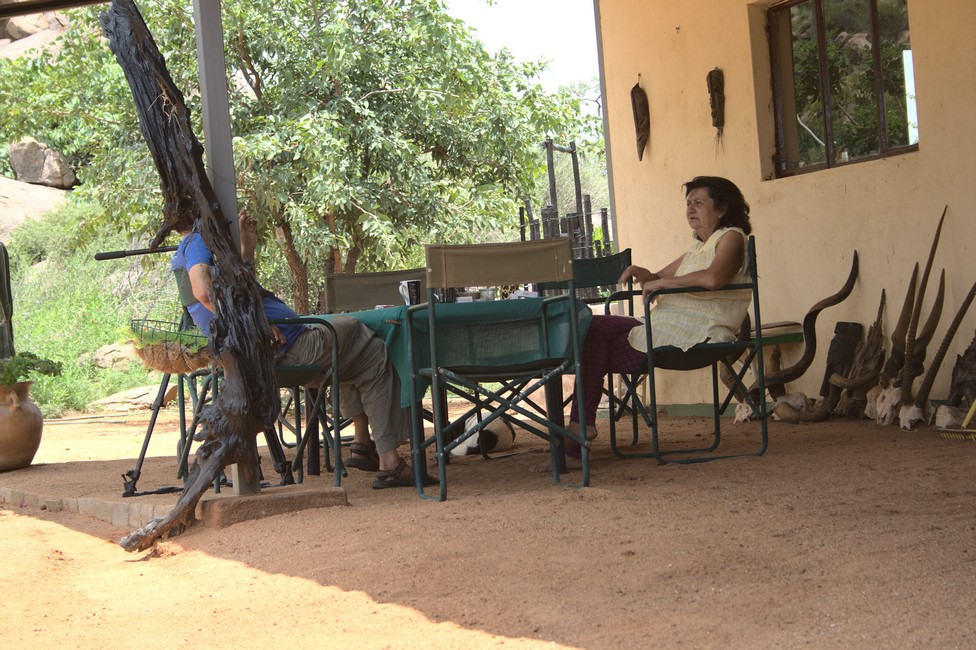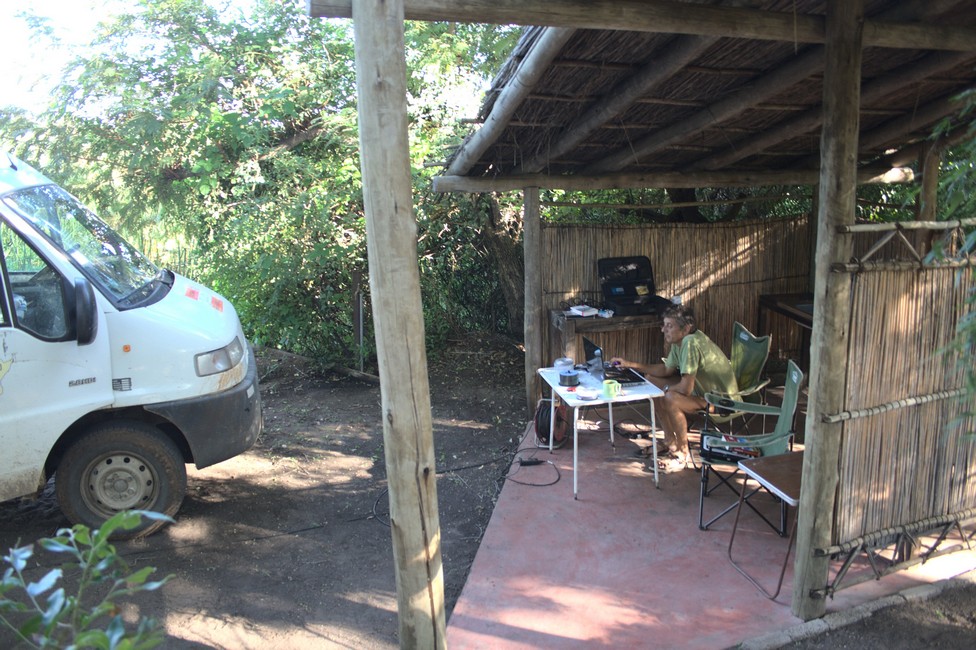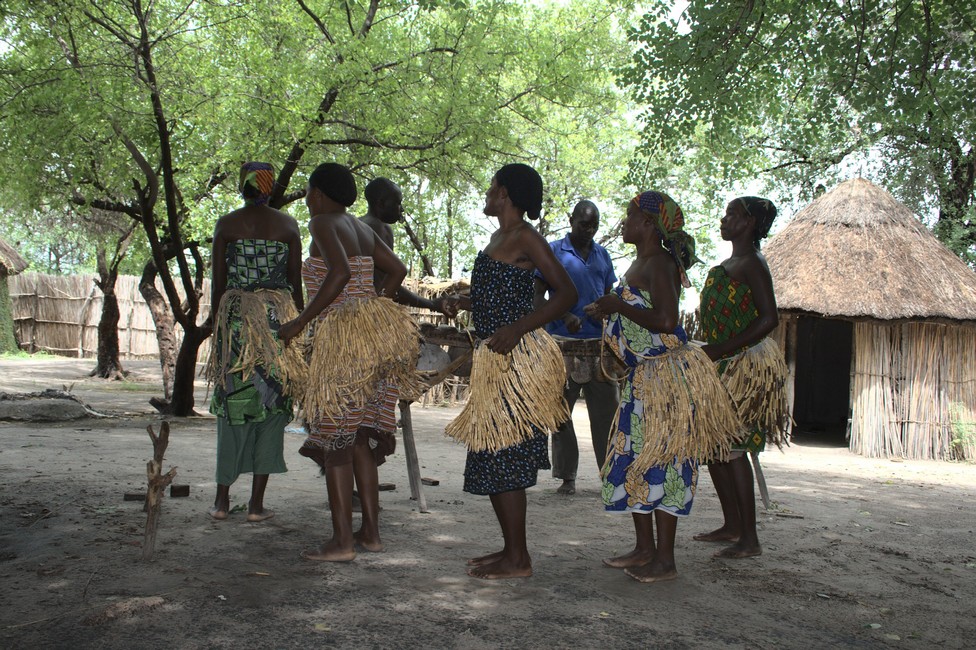After New Year, we move on and go through the Caprivi passing Grootfonein to Kamanjab, where we check in at Vital and Marianne the owners of Oppi – Koppi Restcamp.

The site is idyllic and the owners are nice people. What we do not yet know that we will spend almost a year here.
After a couple of days our friends who we were traveling with from Kenya to Uganda Stephen and Steffi arrive at Oppi Koppi. They wanted to find work in South Africa but could not find, so they started working at Oppi Koppi.


At the campsite we discover a chameleon. Suspicious, it turns its eyes in all directions. The coloring is adjusted to the background, but not only that, but the mood of the animal can be read from the color.

On Oppi – Koppi, we get acquainted with the German-Namibian Kathrin who runs the Porcupine Camp near to Kamanjab. We go to visit her.

The rest camp is situated in beautiful countryside. The lodge is simple,with tents and has a campground. The specialty here are porcupines that live in the wild, but at night if they want, go in for a snack. We want to see this, of course.

Kathrin tells us much about their socalled children, as she calls the animals. She shows us the different species of stings which these pretty animals have on their backs. We sit with her with coffee and cake, and quite forget how fast time goes by. It has become dim and Kathrin has quickly spread the food and turned on the radio, because they are used. Now we have to wait.
Once it is dark the first porcupines appear.

They look cute and are surprisingly not very shy. Kathrin must provide more food, because they have huge appetite today.
It does not take long and there are several at the feeding station. They are surprisingly large. We thought they were much smaller.
When there is food, there is ranking and they fight a bit to get the largest portion, which produces a rattling noise.
It was a nice evening, but we say goodbye to Kathrin and say goodbye to Marianne and Vital, we do not yet know that we have been back here in two weeks. We go on the “pad”, which means something like street.













